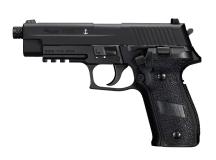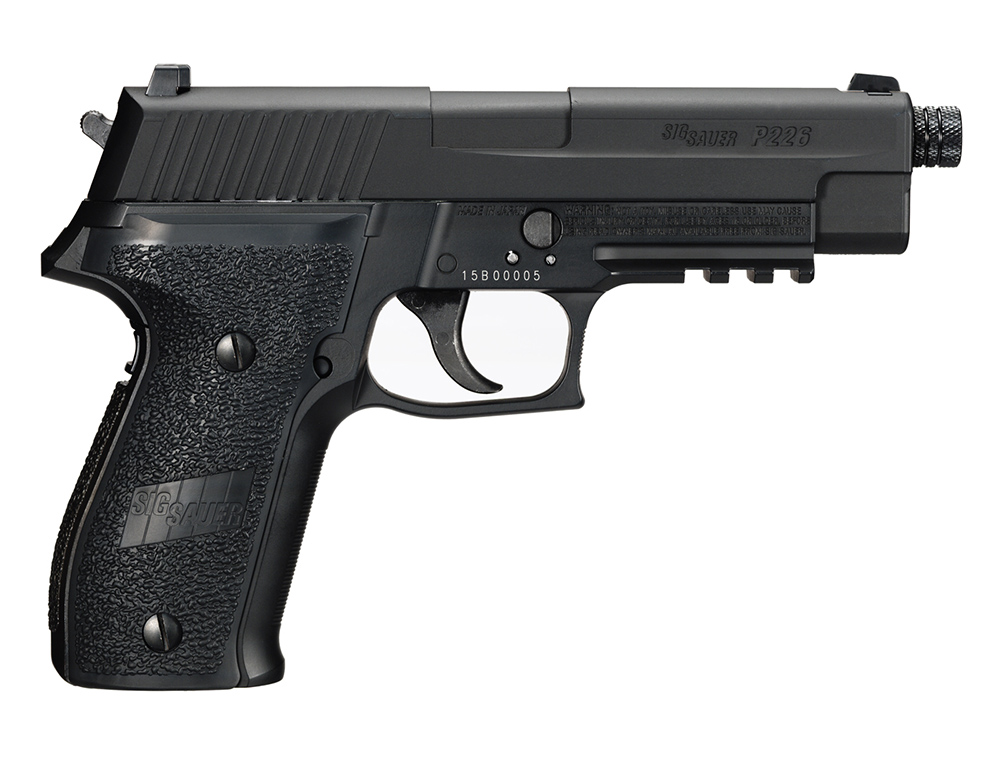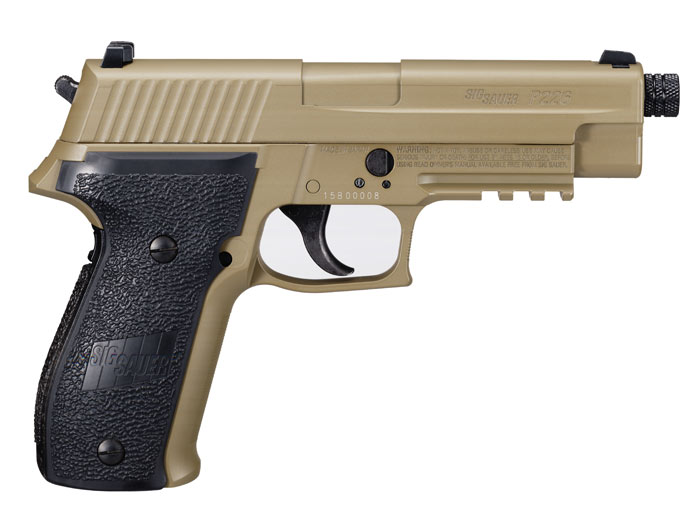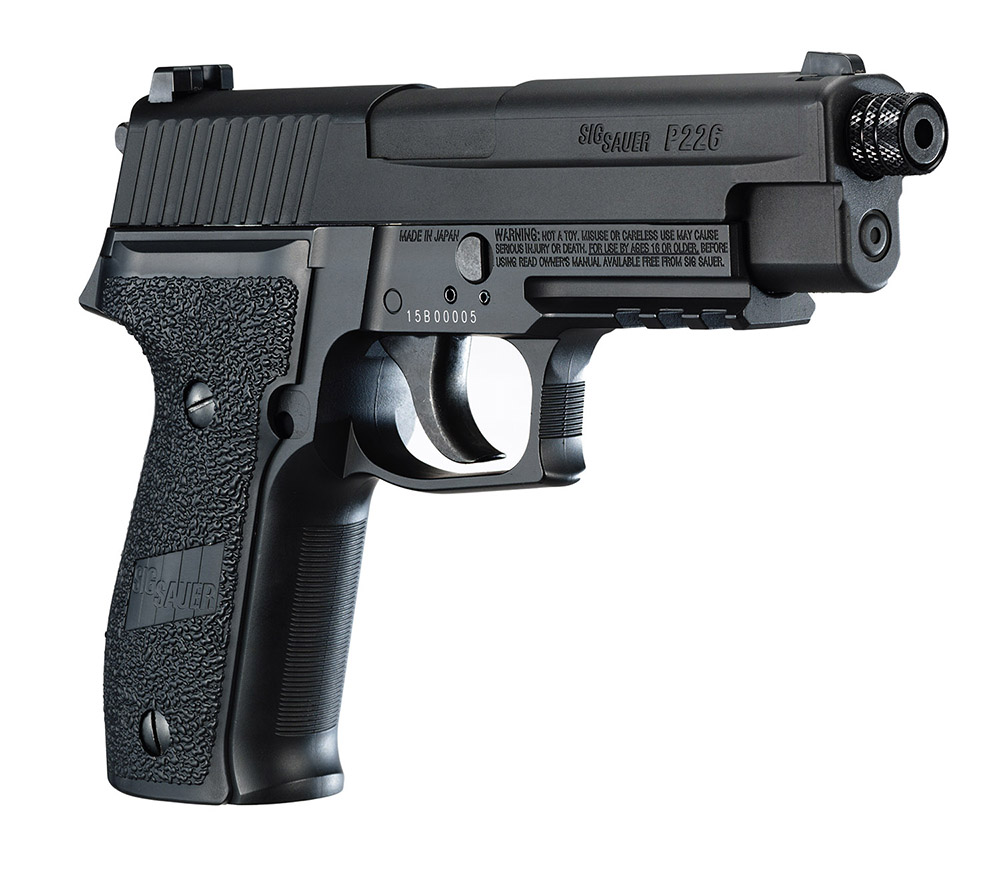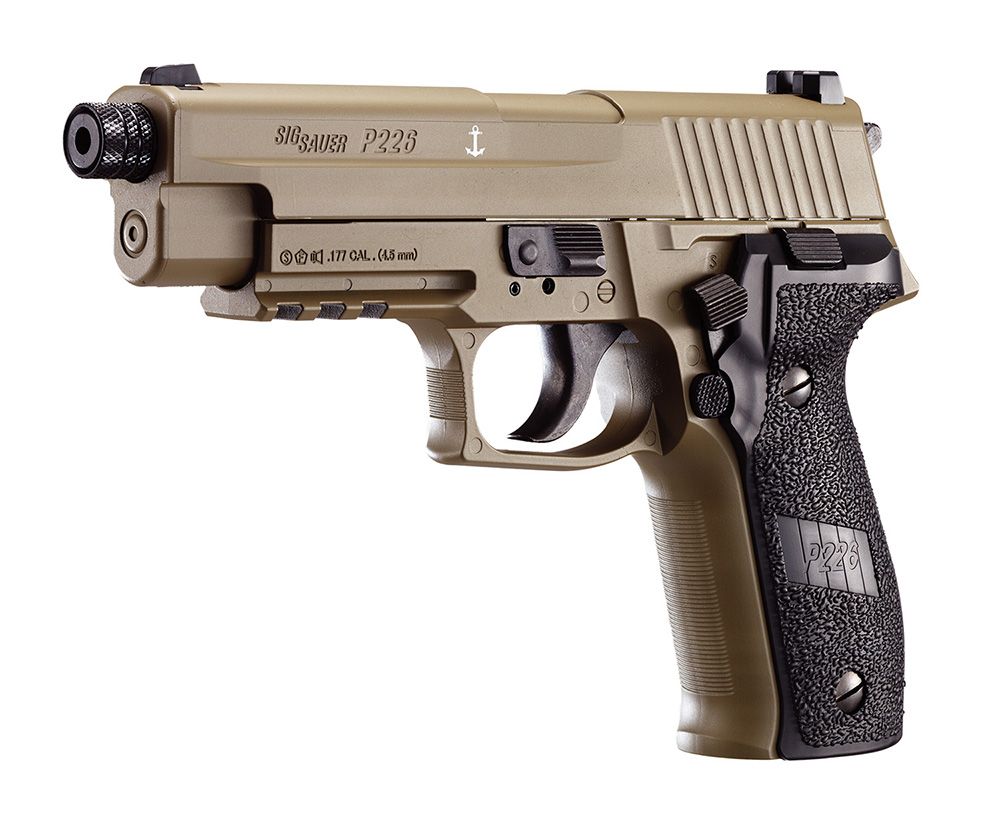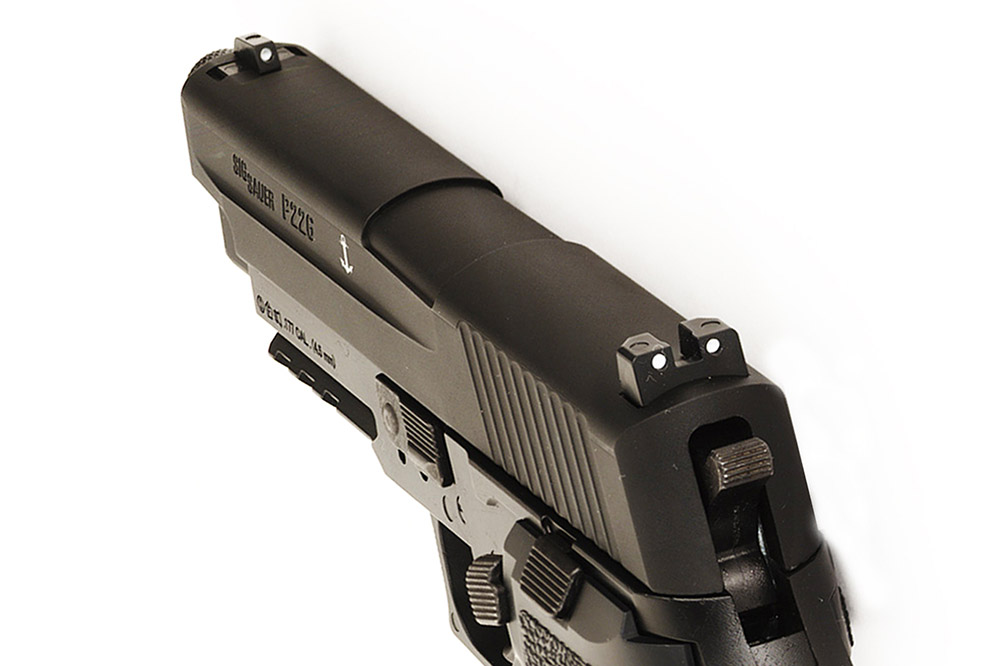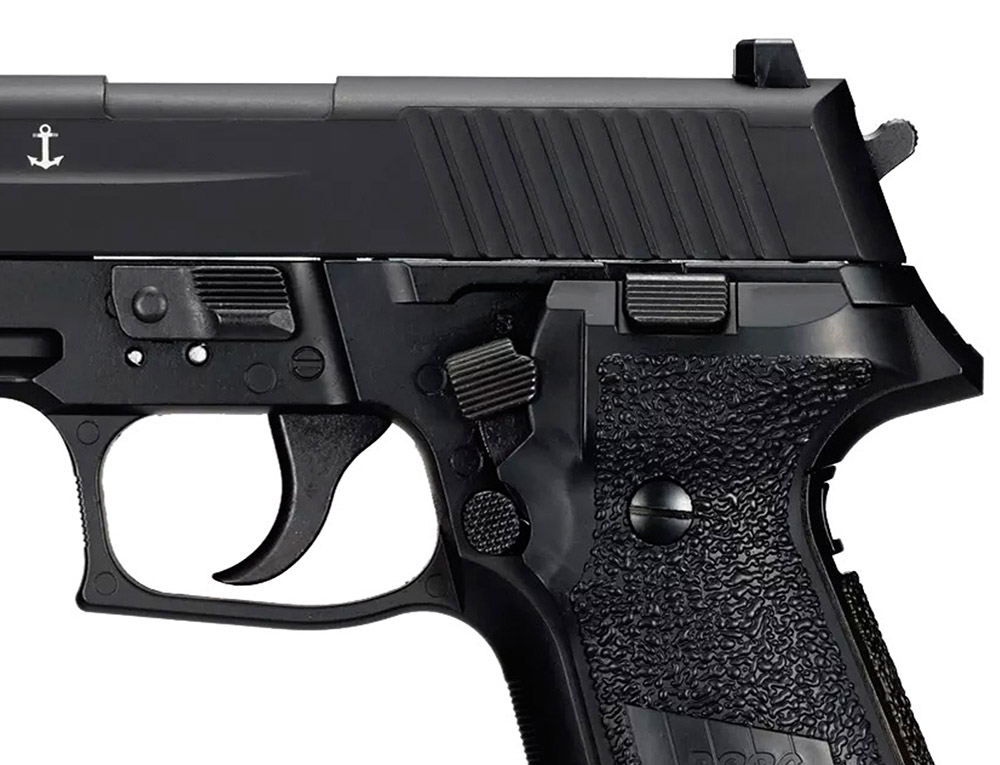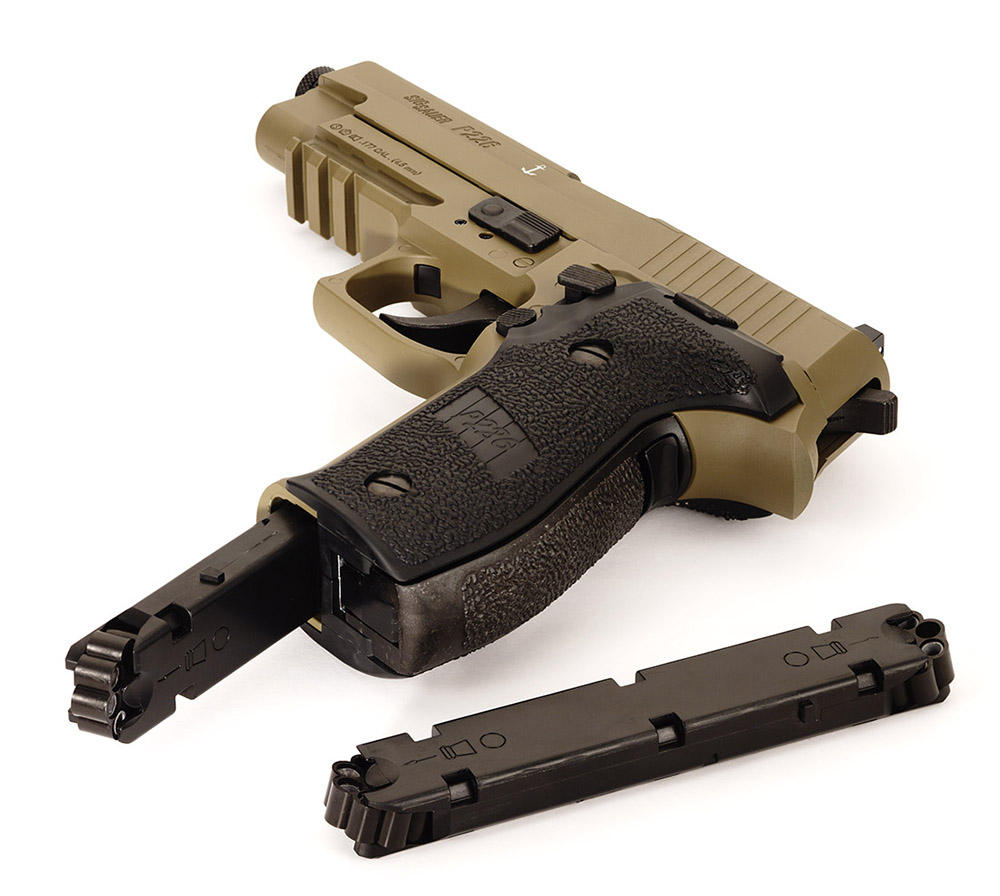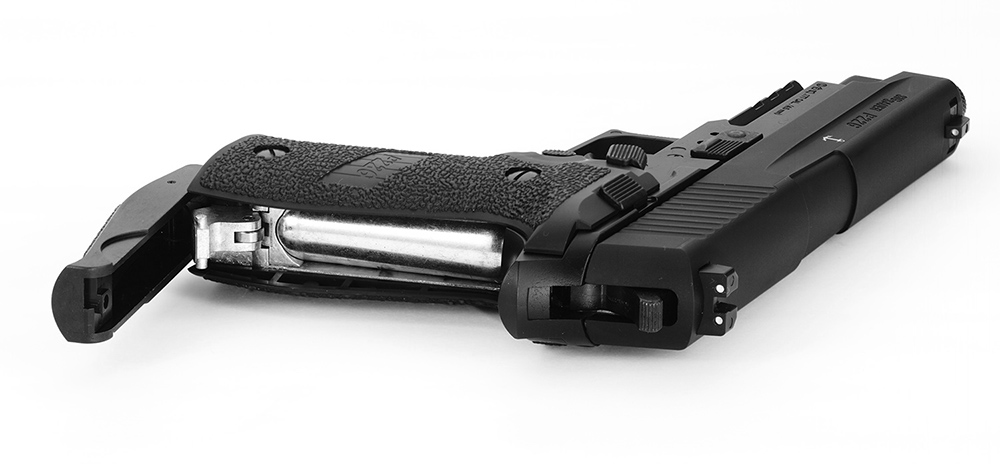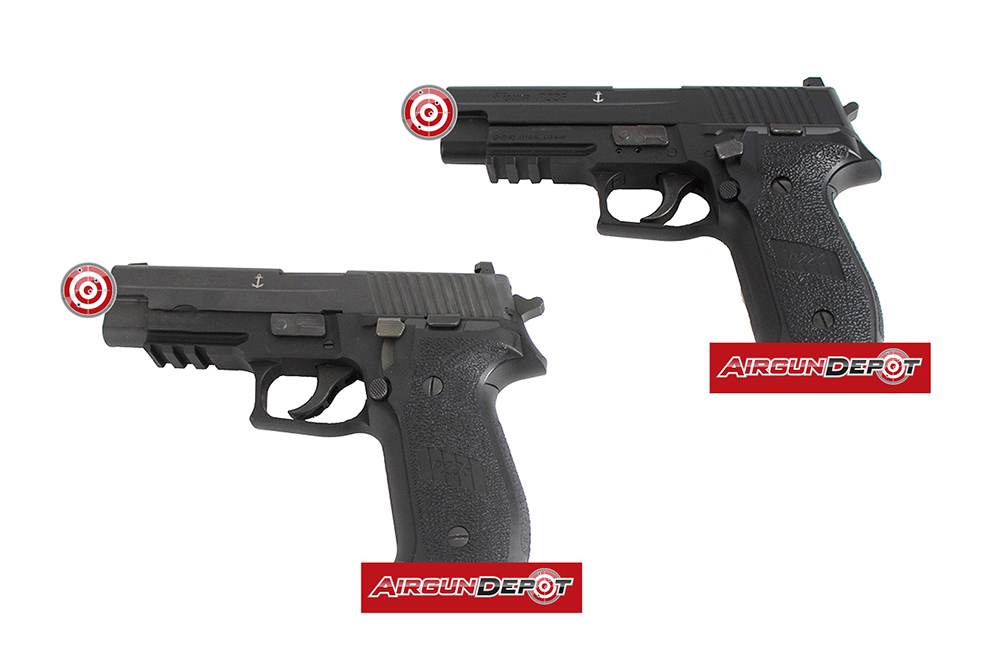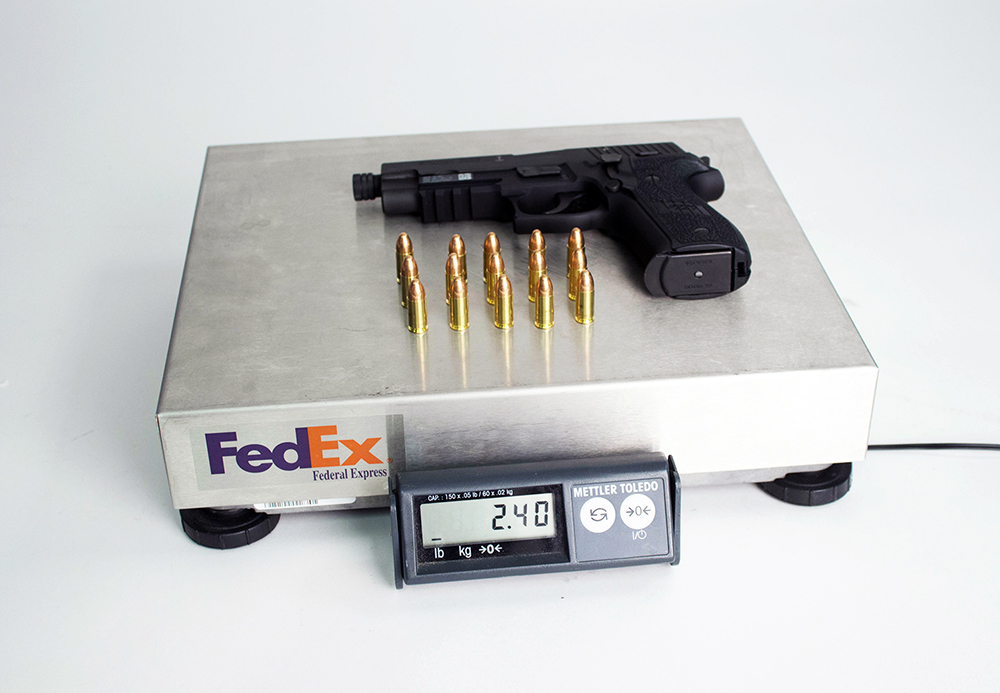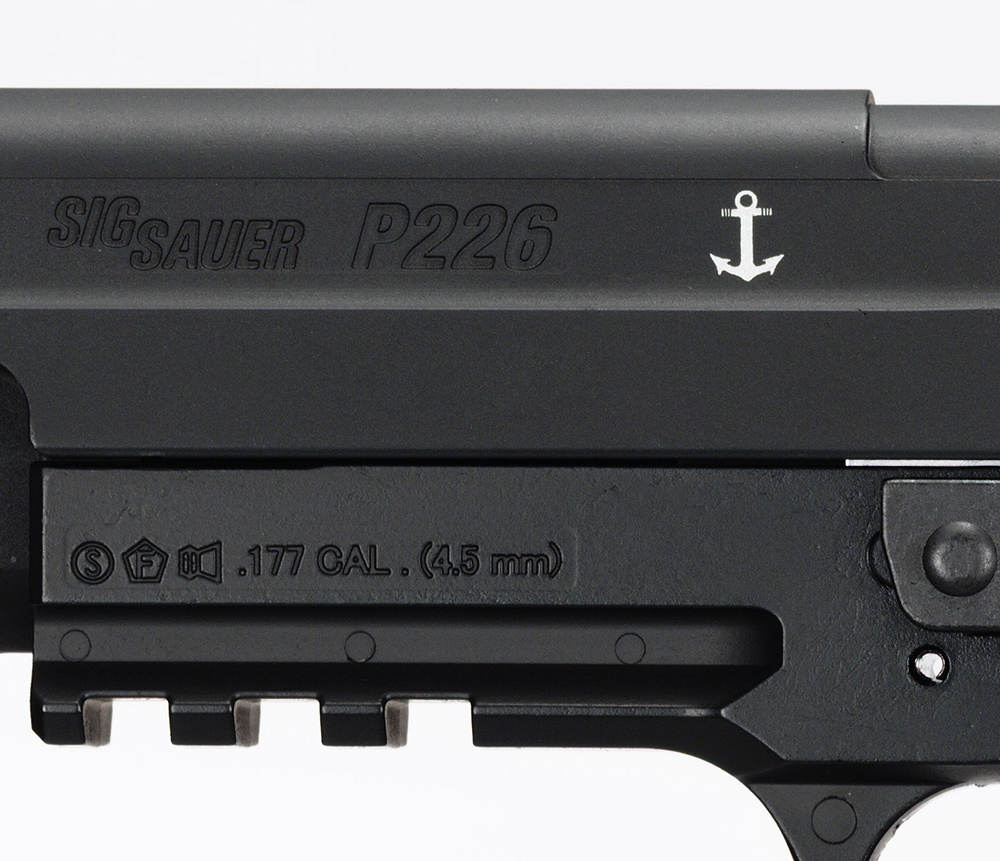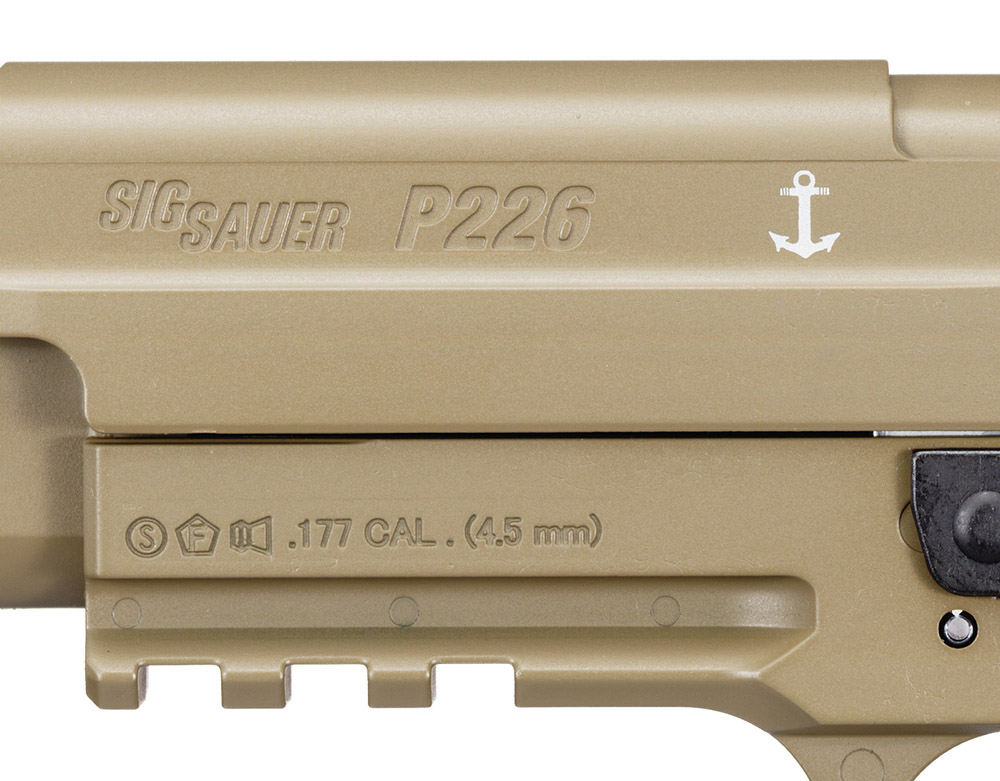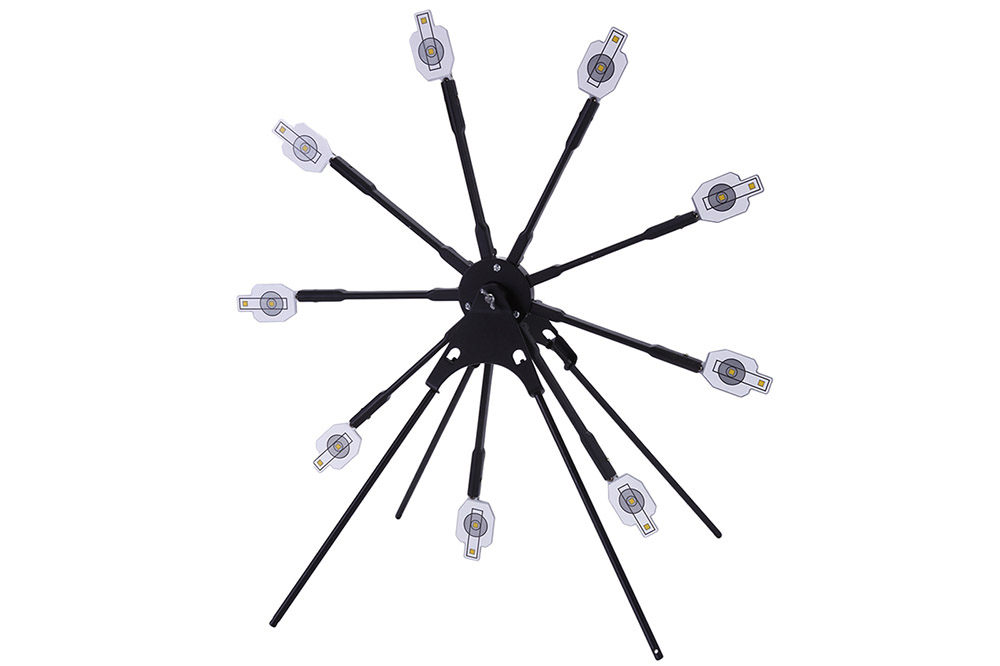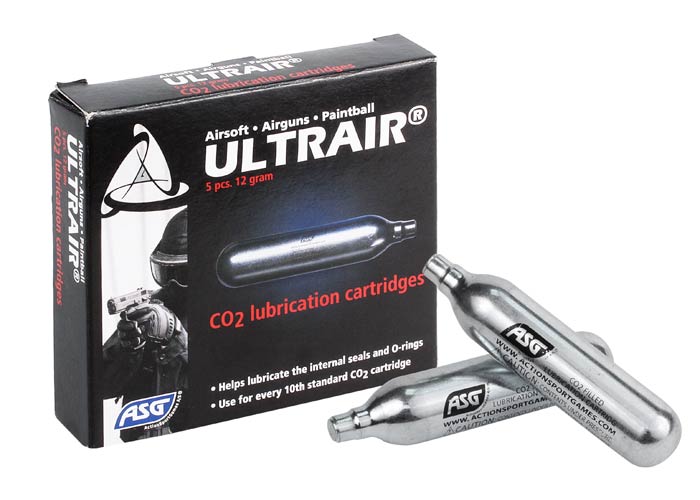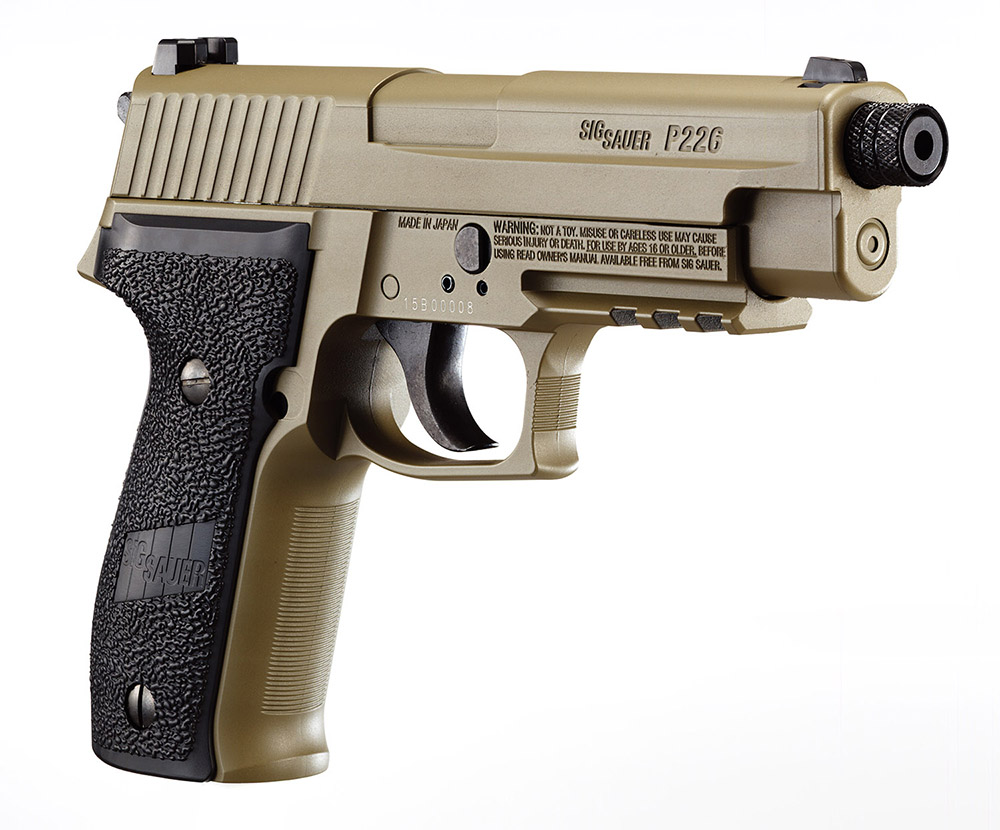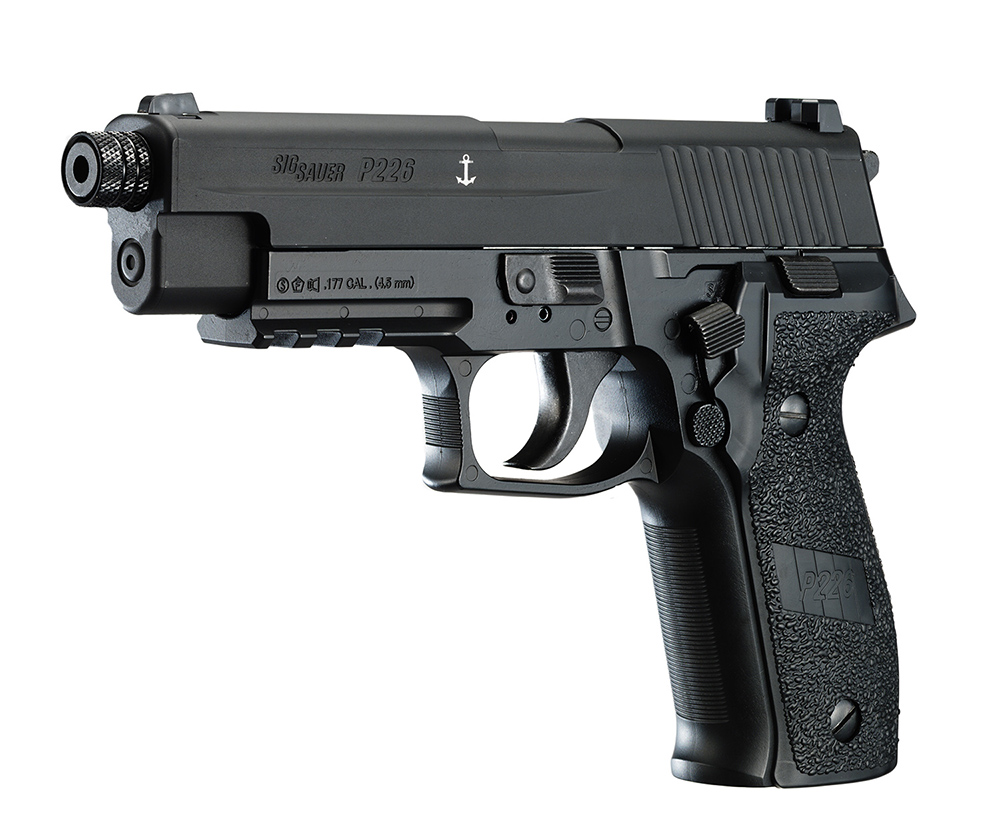Free Shipping on orders over $150
Talk to an Airgun Specialist 1-866-477-4867
Definitive Guide to SIG Sauer P226
sig-sauer-p226-2.gif
Highlights
The P226 is one of the most respected and recognized handguns in the world. Developed in 1984 for the US Army?s XM9 service pistol trials, it was one of only two guns to survive the rigorous torture test that was set forth in search of a replacement for the aging 1911 pattern pistols. Though it was ultimately not chosen, many special operations units, including the US Navy SEALS, saw the benefits of the P226 and adopted it. With the huge popularity of the P226, it?s no question why Sig chose it to be one of the first models to be adapted for the airgun market. Tested at the Sig Academy, the Sig Sauer P226 air pistol is a fantastic reproduction with realistic weight and controls, giving you the ability to practice your shooting skills without having to make a trip to the range.Order a SIG Sauer P226
Video
Sig Sauer Inc is currently one of the largest firearms entities in the world and also the fastest growing. At the 2015 Shot Show they announced they would be entering into the air gun world, and just 9 months later they are delivering with an impressive array of airguns developed and designed to have the same weight and feel as their popular firearms. Keep in mind these aren't licensed reproductions of the Sig Sauer pistols (as has been previously offered by other suppliers) but rather Sig in-house manufactured guns. Meaning Sig's history of high quality control should be in place with the new airgun line.
Comparing the same pellets in the similarly constructed Beretta PX4 Storm, on average the Sig P226 was around 5% faster in velocities. That's not the point though, the point is that the informed airgun buyer sees FPS claims for what it is; pointless hyperbole, and Sig would have been better served to list a more realistic feet per second reading somewhere on the back of the packaging instead of highlighting exaggerated and pointless claims on the front. Because as mentioned, we're buying a CO2 pistol, airgunners know what it is and what it isn't. Perhaps these efforts are simply aimed at the teenager staring at the gun at their local big box store. Sigh, oh well... moving on.
The Basic Anatomy of the Sig P226
he p226 features a double/single action trigger. The double action pull is long, as expected, but very smooth and pulls at 9 lbs 3 ounces, once the trigger resets into single action mode the trigger pull is a very nice 3 lb 14 oz. This package makes for a smooth, fast shooting pistol that should feel right at home in the hands of p226 owners. One fault we did find with the trigger was that once the pistol has been fired and the slide has cycled putting the gun into single action firing mode the trigger still had to be released all the way out and then pulled all the way back in order to have the rotary magazine advance to the next pellet. This may be somewhat troublesome for shooters who are accustomed to releasing the trigger only to the reset point as doing so will not advance the magazine and you will find you are just shooting CO2 at that point. Even still, with some practice the P226 is capable of some fast shooting. The Sig P226 comes standard with 3 dot sights that are easy enough to pick up and have a really nice sight picture. For an added touch of realism, a dot of glow in the dark paint can be added to the white sight dots to simulate night sights. The Sig Sauer p226 air pistol controls do a nice job of replicating those of the real pistol. The functioning mag release and safety/decocker feel very similar to the real deal, however absent from the air pistol is a functioning slide stop/release. This also means that manipulating the slide, while adding to the realism of the gun, is not required for operation. The Sig Sauer P226 air gun fires from a stick type, rotary magazine. Each magazine holds 8 rounds per side for a total of 16 per magazine. Loading them was fairly simple but the use of a pellet pen really made the job go faster. The magazines eject freely and quickly from the mag well making mag changes a cinch, also because the CO2 is housed separately from the magazine it eliminates the potential for wasted gas that can occur with other pistols. The P226 CO2 pellet pistol features an innovative CO2 loading design that is far superior to any other system in our opinion. No hex tools, twisting of nuts or hand tightening of any kind is needed. Simply place the CO2 in and close the handle and you're set. When you see the design you'll wonder why someone hasn't come up with the system before!Comparing the Sig Sauer P226 Pellet Pistol to the P226 Firearm
We were able to get our hands on the Sig P226 firearm and compare the two side by side. Remembering that one of the prime reasons Sig Sauer has entered the air pistol marketplace is first and foremost to provide a training tool. To be an effective training tool the air pistol needs to mimic the firearm in as many ways as possible. Take a look at the above picture. Go ahead and pick out which one you think the pellet gun is. We've purposely covered the two ?tell? areas that would tip you off and make this easier. Now look at the below picture and you should be able to tell which is which. Even with the thread protector uncovered (the firearm is slightly larger) and the magazine bottom showing. It's remarkable how similar the two guns are. (In case you're wondering, the top gun is the air gun) As mentioned previously the controls of the gun act the same, with the exception of the slide lock being absent on the P226 pellet pistol. We can't complain though as it's remarkable that Sig has produced a full metal blowback gun of this quality at the $100 price point. Pulling out the scales the P226 firearm weighs in at 2.05 lbs. The P226 pellet gun comes in at 2.45 lbs. That's quite a difference? but not so fast. Those weigh-ins were without ammo. With a full magazine the P226 firearms weighs 2.4 lbs. The P226 pellet gun with a full magazine: 2.5 lbs. Nice. Besides just the weight of the gun feeling the same, the feel and balance of the gun is similar as well. With it being a blowback gun it will even simulate as much as possible the firing of the gun (although the recoil will be much less). Even the U.S. Navy anchor symbol has been included, since the specific model the P226 pellet pistol is modeled after is the MK-25 Threaded Barrel P226, as carried by the U.S. Navy SEALS (the fleet's special warfare operations).Performance
The reality is if you're buying a CO2 pistol, you shouldn't be that concerned with comparing velocities. The limited power of a CO2 cartridge in a pistol doesn't lend itself to humane hunting so why even figure ft-lb energy? But manufacturers can't resist claiming unrealistic velocities and exaggerating what a gun can do. In this case, Sig Sauer claims the P226 can reach velocities of 510 fps. To make a long story short, the closest we could come to that claim was 458 fps using their extremely light Sig Sauer Crux Ballistic pellets (5.56 grains). So about 10% lower than claimed, and granted Airgun Depot is housed in the Rockies which lowers that a tad.Comparing the same pellets in the similarly constructed Beretta PX4 Storm, on average the Sig P226 was around 5% faster in velocities. That's not the point though, the point is that the informed airgun buyer sees FPS claims for what it is; pointless hyperbole, and Sig would have been better served to list a more realistic feet per second reading somewhere on the back of the packaging instead of highlighting exaggerated and pointless claims on the front. Because as mentioned, we're buying a CO2 pistol, airgunners know what it is and what it isn't. Perhaps these efforts are simply aimed at the teenager staring at the gun at their local big box store. Sigh, oh well... moving on.
Accessories
The first accessory you'll want to pick up for your Sig P226 air gun is extra magazines. Expect to get about 80 effective shots per CO2 cartridge before the gun won't cycle. That's exactly 5 clips worth. Only makes sense to use to buy 4 extra clips so you can reload at the same time you replace the CO2 cannister. Assuming you don't already have a holster, you'll want to pick up the perfect holster for your needs, whether that's a leg holster, standard belt holster, or our favorite at the moment, the Horizontal Shoulder Holster. Brings to mind classic Mack Bolan novels from our youth (basically a tougher American version of James Bond for those not familiar). Sig Sauer has released a great selection of training targets. There are, of course, the classics like shooting galleries, spinners and auto-reset knockdown targets. But our favorite is the Texas Star target, the idea is that as you shoot the targets, the target folds back, changing the balance and causing the target to spin in unpredictable ways. Randomness = fun in our books! The Picatinny rail under the barrel allows the obvious additions of lasers and lights. But many have also noticed that the P226 replicated by Sig Sauer was the MK-25 design with the threaded barrel. The mind races wondering what a Sig P226 would look like utilizing these threads and picatinny rail properly? You might want to check back here at Airgun Depot in October to see what exclusive item develops (hint hint).Maintenance
Since your firearm is CO2 powered, the valves need a small amount of lubricant. Most people will simply put a drop of Pellgun Oil on the end of a CO2 cylinder every few CO2 cartridge changes. Though there is a product from ASG called Ultrair that is a CO2 cartridge with a small amount of silicone inside of it. They state that you simply use one of these cartridges for every 10 regular CO2 cartridges. If you plan on firing your P226 pellet gun in the winter, realize that cooler temperatures do not cooperate with CO2. Because the pressure of carbon dioxide gas depends on the temperature, a CO2 powered gun starts performing poorly below 40 degrees fahrenheit. Meaning velocity drops off. Training Pistol Sig?s goal was to create an alternative for training. The P226 pellet pistol mimics the firearm to an incredibly high degree. The weight is the same, the blowback helps simulate the recoil of the firearm, the full metal housing is the same, the controls are almost the same (only the slide lock is missing). Compare the guns side by side below and notice the attention to detail put into the P226 air gun. Truly everyone from law enforcement, to military to gun owners can use the P226 air pistol to improve their accuracy, competency and increased trigger time. 

Innovative CO2 Loading The P226 CO2 pistol features an innovative CO2 loading design that is far superior to any other system in our opinion. No hex tools, twisting of nuts or hand tightening of any kind is needed. Simply place the CO2 in and close the handle and you?re set. When you see the design in action you?ll wonder why someone hasn?t come up with the system before! 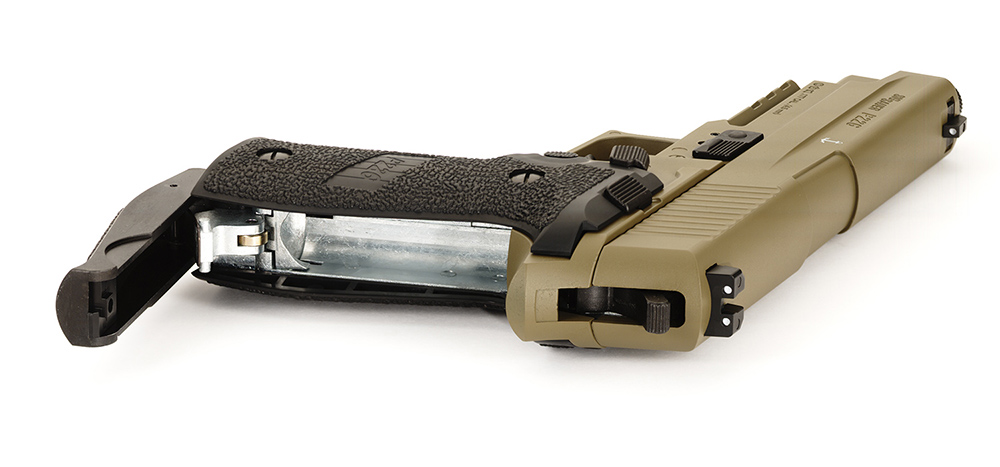

Detailed Review
The P226 is one of the most respected and recognized handguns in the world. Developed in 1984 for the US Army?s XM9 service pistol trials, it was one of only two guns to survive the rigorous torture test that was set forth in search of a replacement for the aging 1911 pattern pistols. Though it was ultimately not chosen, many special operations units, including the US Navy SEALS, saw the benefits of the P226 and adopted it. With the huge popularity of the P226, it?s no question why Sig chose it to be one of the first models to be adapted for the airgun market. Tested at the Sig Academy, the Sig Sauer P226 air pistol is a fantastic reproduction with realistic weight and controls, giving you the ability to practice your shooting skills without having to make a trip to the range.
